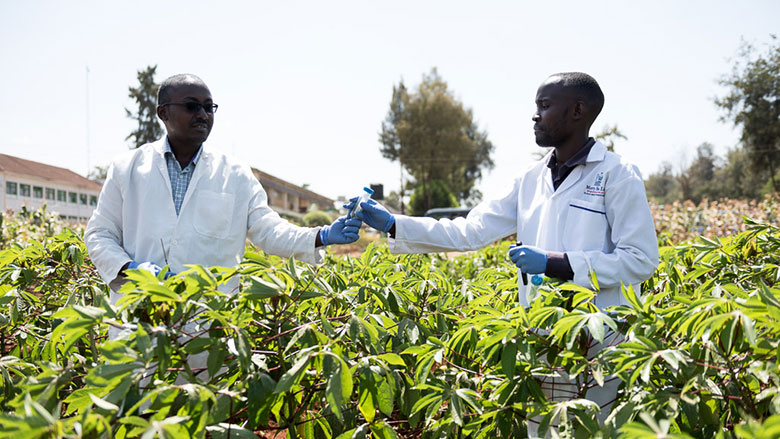NAIROBI, April 8, 2019 – Kenyan households that are exclusively engaged in agriculture contributed 31.4% to the reduction of rural poverty, and agriculture remains the largest income source for both poor and non-poor households in rural areas, according to the latest World Bank economic analysis.
The 19th Kenya Economic Update, Unbundling the Slack in Private Investment, says agriculture is a major driver of growth for the Kenyan economy and is the dominant source of employment. From 2013-2017, the report notes the agriculture sector contributed on average 21.9% of gross domestic product (GDP), with at least 56% of the total labor force employed in agriculture in 2017. Agriculture is also responsible for most of the country’s exports, accounting for up to 65% of merchandise exports in 2017. As such, the sector is central to the government’s Big 4 development agenda, where agriculture aims to attain 100% food and nutritional security for all Kenyans by 2022.
“We found that productivity increases in the agriculture sector not only benefits poor households, it can potentially lift them out of poverty,” said Ladisy Chengula, World Bank Lead Agriculture Economist and author of the report’s special section on transforming agriculture sector productivity and linkages to poverty reduction.
Despite progress towards achieving food security for all Kenyans, the analysis finds that real agricultural value-added has declined relative to levels attained in 2006. This was due to weather related shocks, prevalence of pests/disease and dwindling knowledge delivery systems such as the lack of extension services on adoption of modern technology.
Boosting Agricultural Productivity
The report recommends policy reforms that could help transform the sector and deliver on food and nutritional security, including:
- Enhance access to agricultural financing: While Kenya represents a vibrant and enabling market for FinTech, the report notes the more traditional banking that is needed to service commercial agriculture is lacking. About 4% of commercial bank lending is for agribusiness, despite most Kenyans being employed in agriculture or agribusiness.
- Increase the use of fertilizer: The report found that fertilizer use remains inadequate in Kenya. The report also found the targeting mechanisms for the government’s fertilizer subsidy program is inefficient, often benefiting medium/large scale famers relative to small-scale farmers. Reforming fertilizer subsidies to ensure that they are efficient and transparent, and target smallholder farmers remains key in restoring productivity.
- Establish structured commodities trading: Like most countries in Africa, the government still retains a big role in marketing agricultural outputs, especially maize, leaving little room for private sector participation. Further, National Cereal and Produce Board (NCPB) buys maize at a premium above the price determined by market forces. These interventions result in undue fiscal pressures, mis-allocation of resources from other potentially high productivity expenditures (extension services) and disincentivize private sector participation. Structured commodities trading could minimize inefficiencies and transform small holder farmers from subsistence into successful agribusinesses.
- Invest in irrigation: While 83% of Kenya’s land area is arid and semi-arid, 2% of arable land is under irrigation compared to an average of 6% in Sub-Saharan Africa and 37% in Asia. The low usage of irrigation means Kenya’s agriculture is fully rain dependent and susceptible to drought shocks. The analysis shows that investing in irrigation and agricultural water management for smallholders can reduce productivity shocks and raise the sector’s total factor productivity, potentially climate proofing the sector.
- Support stronger farmer organizations: Kenya has many geographically dispersed smallholders that are not integrated into key agriculture value chains. Dispersion increases production costs and reduces small farmers’ competitiveness. The analysis shows that stronger farmer organizations (FOs) could foster economic inclusion of smallholders and increase their market power-thereby raising their incomes and productivity. Further, while value addition to agricultural commodities remains low, increasing the agribusiness to agriculture ratio could create more jobs and reduce poverty.

